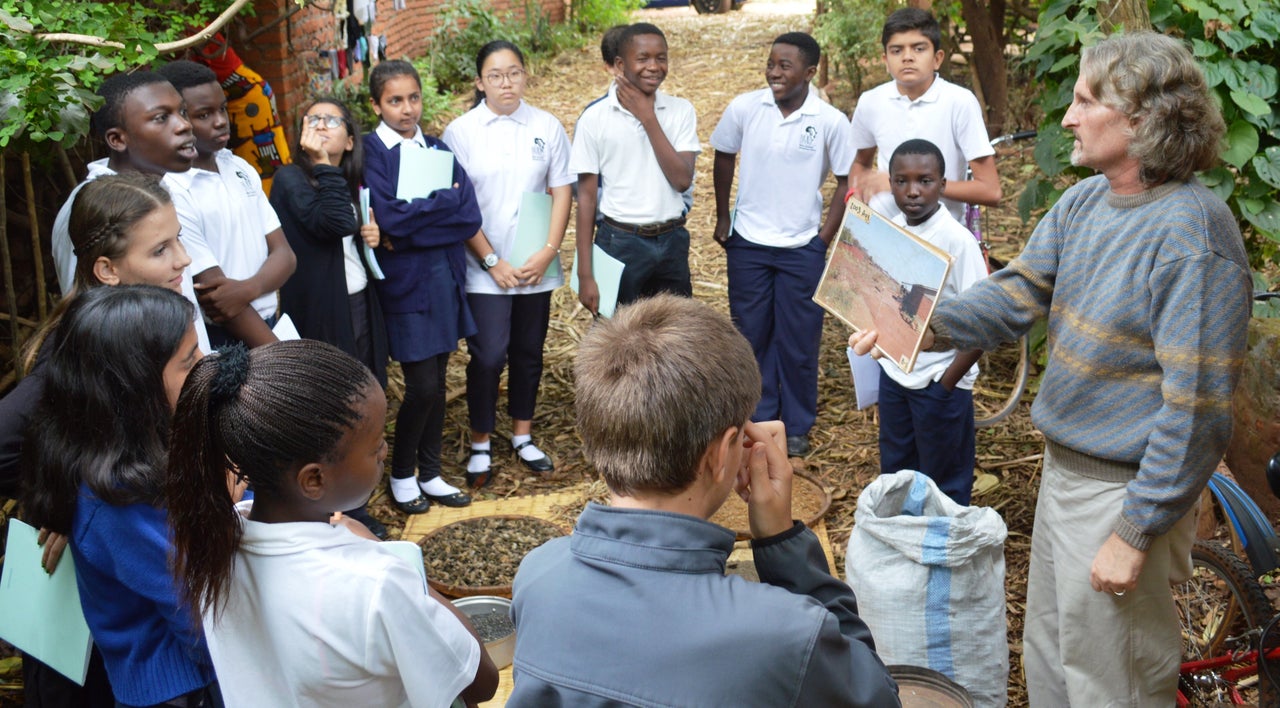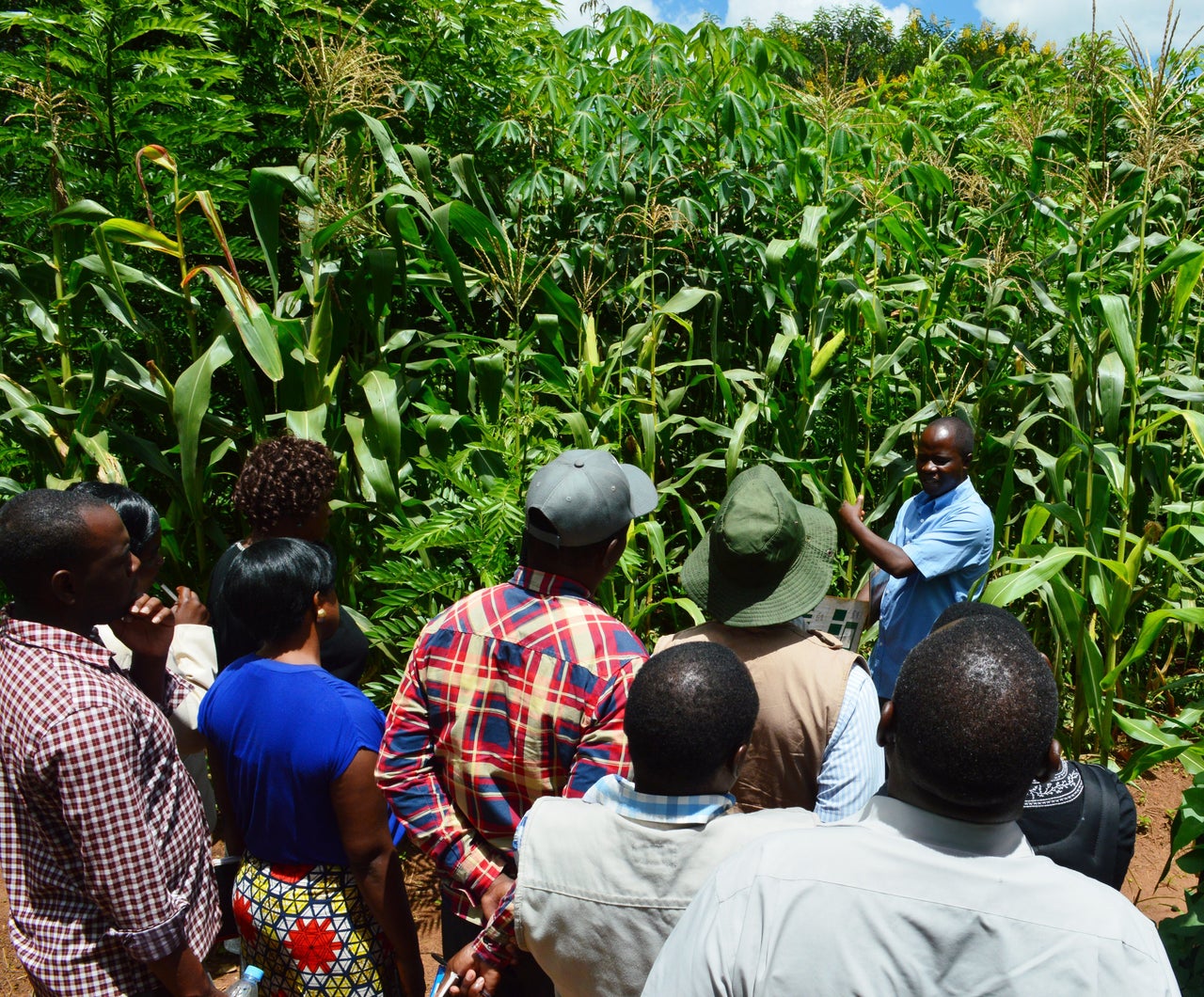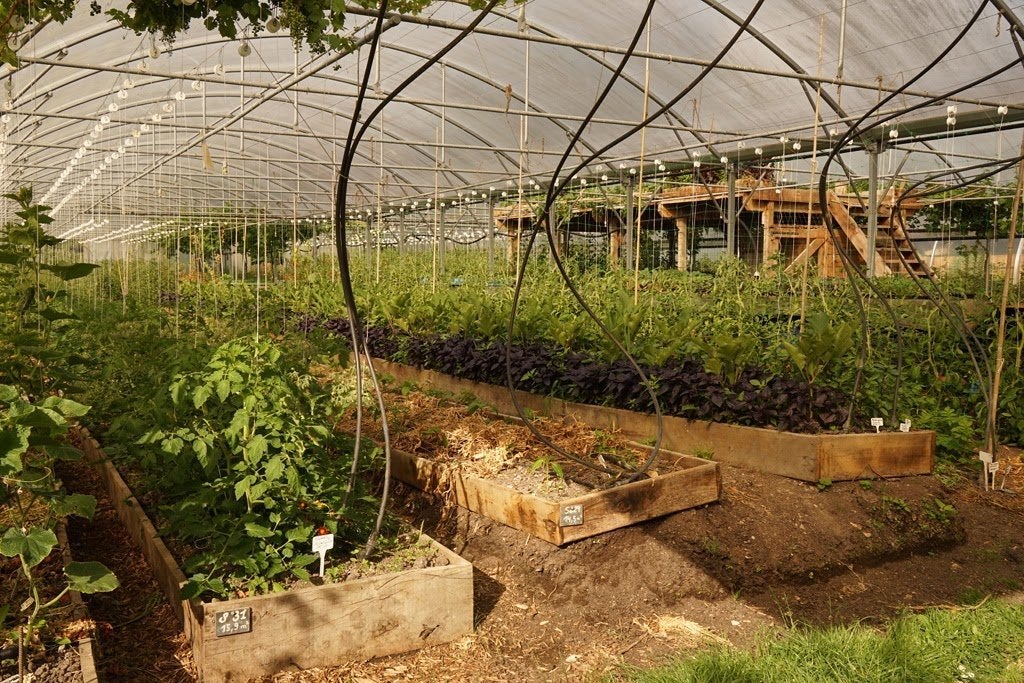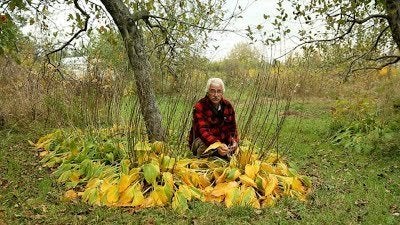Kristof and Stacia Nordin’s 3.7-acre garden outside Lilongwe, in Malawi, is a food forest. Mango trees grow beside tall tamarinds, acacia, guavas, passion fruit and coconut palms. Below them are lemon and orange trees, tomatoes, blackjack, maize, and cassava. The ground is thick with pineapples and watermelon, and decomposing leaves and other plants cover a rich soil growing yams and sweet potatoes.
The contrast between their garden at Chitedze, where they grow over 200 crops, and much of the land beyond their property is stark. Where the Nordins’ land is fed with their own compost and organic wastes, the majority of Malawian farmers use chemical fertilizers.
Where the Nordins have a 10-month growing season, picking fresh fruit and vegetables throughout the year, Malawian agriculture is dominated by maize, which is vulnerable to droughts, heat waves, floods and insect infestations.
The Nordins are permaculturalists, two of many thousands of people around the world who are achieving extraordinary yields by planting a huge diversity of foods in very small areas, without using chemical fertilizers, pesticides or mechanization.

Permaculture is a philosophy of working with, rather than against, nature. By getting many different food crops to grow together, as they would in any natural forest or ecosystem, it seeks to avoid the negative ecological effects of conventional, large-scale farming, which tries to maximize the yield of a single crop, or monocrop.
There is no one definition, says Pete Harper, author and an environment lecturer at the University of Bath in the U.K. But what unifies the permaculture movement is a desire for both sustainability and high productivity. “It is supposed to require little work to sustain, mimic the diversity and complexity of a forest or other natural system, and be heavily based upon perennial food plants, and be self-perpetuating and permanent,” Harper says.
Stacia, a registered dietician, and Kristof, a social worker, were U.S. Peace Corps volunteers sent to Malawi in 1997 to help with HIV prevention work. They quickly learned that the southern African country had some of the highest malnutrition and HIV levels in the world, and that modern drugs alone were not the answer.
Poor nutrition can contribute to the progression of HIV. “We couldn’t address a disease that attacks the immune system without addressing the fact that immune systems were already compromised by malnutrition,” says Stacia. “We couldn’t work on improving nutrition without working to improve the diversity of what was being grown. And we couldn’t improve the diversity of agricultural crops without working to improve soil fertility.”

The Nordins, whose daughter Khalidwe was born in Malawi, say they learned the principles of permaculture and low-impact farming from close observation of how nature works, meeting people and experimenting. Within 15 years of buying their average-size smallholding, they had transformed it into a Garden of Eden by mimicking the many levels of a forest, mulching, composting, collecting rainwater and intercropping (planting crops together to get maximum biological interaction).
They now grow 50 to 60 local foods, collect their own seeds, and teach nutrition and permaculture to government officials, church leaders, schools and other farmers. Stacia works with the ministry of education, teaching health and nutrition in primary schools, and Kristov teaches and demonstrates permaculture. The garden, they say, requires little work.
Most permaculturalists work on the household scale, and there have been few peer-reviewed studies to quantify their achievements. But many studies suggest permaculture could be both viable and productive, and call for more scientific research.
In France, Charles and Perrine Hervé-Gruyer became market gardeners in 2006. He had been a sailor, she a lawyer, and the small patch of land they bought in Normandy was considered very poor quality. But within a few years, the couple was growing under glass and in the open 16 kinds of fruit, 67 vegetable varieties, as well as herbs and edible flowers from just 0.25 acres.
A three-year study of their farm by a technologist from INRA, France’s leading agricultural research institute, and others concluded that small-scale farming conducted on permaculture principles and done entirely by hand could be both efficient and competitive.
“Despite our inexperience, the farm was transformed in barely 10 years from a bare field to a rich eco-agro system,” says Charles Hervé-Gruyer. “This capacity for repairing the planet more rapidly than one might think is possible from reading scientific papers, gives a lot of hope for the generations to come.”

Stefan Sobkowiak, a Canadian, turned a 12-acre commercial apple orchard in Quebec into one of North America’s largest permaculture projects. Maximizing biodiversity, he now grows 100 varieties of apples, 18 kinds of pears, as well as plums, cherries, peaches, paw-paws, grapes, mulberries, and a range of herbs and perennial vegetables. “Permaculture could feed North America,” he says.
It has real promise, says Nick Jacobs, coordinator of I-PES food, the International Panel of Experts on Sustainable Food Systems, but he calls for more study. “Agro-ecological systems, which include permaculture, are showing huge potential to reconcile productivity gains, environmental resilience, social equity, and health benefits. We need to know more about the impacts of these alternative systems, and which policies can help them to thrive,” he says.

What is certain, according to permaculturalists like Kristof Nordin, is that conventional farming is both damaging, and inefficient and wasteful. “It claims to have raised yields in places but has done so at great cost, with extensive soil damage, huge biodiversity loss and negative impacts on nutrition, and natural resources. Agroecology and permaculture are taking off in China, Africa, South America and the Middle East,” he says.
“Science tells us that we can double food production in entire regions within 10 years using sustainable and ecological systems. The question should not be, ‘Can permaculture be scaled up,’ but rather, ‘When are we going to start?’”
For more content and to be part of the “This New World” community, follow our Facebook page.
HuffPost’s “This New World”’ series is funded by Partners for a New Economy and the Kendeda Fund. All content is editorially independent, with no influence or input from the foundations. If you have an idea or tip for the editorial series, send an email to thisnewworld@huffpost.com
